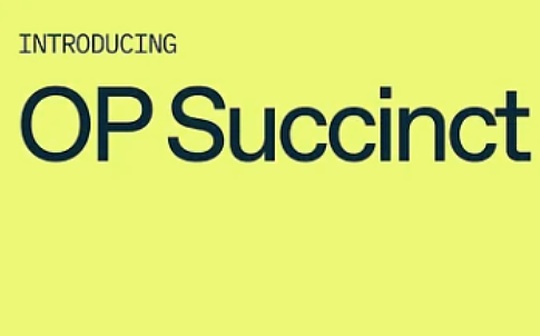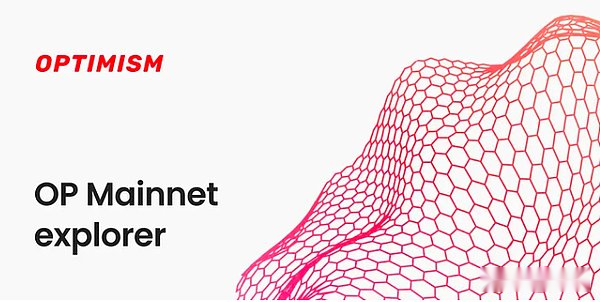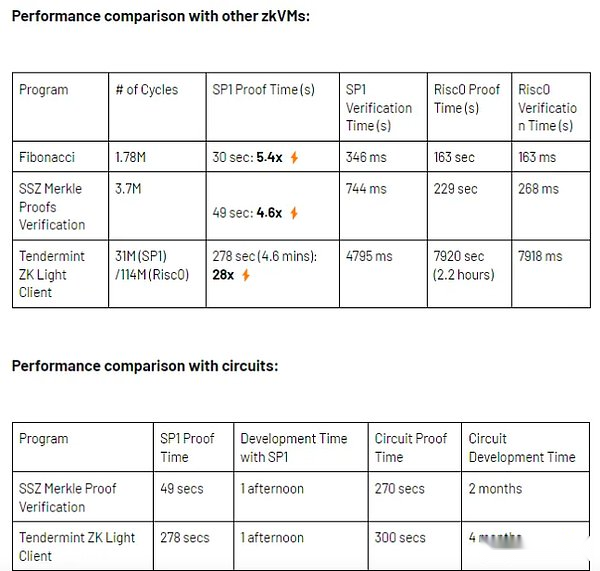
Author: YBB Capital Researcher Ac-Core
TLDR
-
The main feature of OP Succinct is to integrate ZKP into the modular architecture of OP Stack, converting OP Stack Rollups to fully proven ZK Rollups.
-
If Ethereum’s future scaling solution is to convert all Rollups to ZK Rollups, OP Succinct aims to deploy Type-1 zkEVM in OP Stack with Rust and SP1 (completely equivalent to Ethereum).
-
OP Succinct Proposer implements proof generation, as well as proof aggregation and verification.
-
The existing OP Stack system relies on the “7-day fraud prevention window” and will cause transaction delays if disputes occur.OP Succinct reduces transaction completion time by using ZK proof, eliminating the need to extend the fraud prevention window.
-
OP Succinct can greatly reduce transaction costs.
1. Recent review: OP mainnet update and the relationship between OP Stack and OP Labs

Image source: Blockscout
1.1 Key progress on OP mainnet
On March 30, 2024, OP Labs announced the release of “Certificate of Fault” on the OP Sepolia test network, which was officially launched on the OP main network on June 11, 2024.This marks the first step in decentralization, allowing users to extract ETH and ERC-20 tokens from the OP mainnet without the need for a trusted third party.This mechanism enables users to challenge and revoke invalid withdrawals (including Base, Metal, Mode, and Zora).
To ensure the security and trust of user assets, Optimism uses proof of failure to verify the accuracy and effectiveness of on-chain transactions and prevent malicious behavior.Key principles include:
-
Data Availability: Proof of failure ensures that all data on layer 2 is accessible and verified by layer 1.
-
Challenge Period: During a specific challenge period, anyone can object to the 2-tier data.
If the data of Layer 2 and Layer 1 are found to be inconsistent, the disputed party can raise a challenge.Tier 2 operators must submit evidence to refute the challenge and verify the correctness of the data.
-
Finality: If no effective challenge occurs during the challenge period or the tier 2 operator successfully refutes the challenge, the transaction will be finalized and considered valid.
1.2 The relationship and difference between OP Stack and OP Labs
OP Labs is the team or organization that develops Optimism solutions, and OP Stack is the technical framework for building and scaling Ethereum Layer 2 networks.The relationship between OP Labs and OP Stack can be understood as the relationship between developers and development tools.
-
OP Labs: OP Labs is a core contributor to the Optimism project, responsible for the development and maintenance of Optimism Layer 2 solutions.It is a team or organization dedicated to creating and improving technical tools such as Optimistic Rollups related to Ethereum extensions.The main goal of OP Labs is to reduce the load on the Ethereum main network, reduce transaction costs and increase transaction speed.OP Labs is also working with other projects such as Succinct Labs to advance Ethereum scaling technologies, such as OP Succinct focusing on optimizing zero-knowledge proofs.
OP Labs is the main team or organization responsible for developing and maintaining the Optimism network.Their goal is to create efficient scaling solutions for Ethereum, focusing on reducing transaction fees and increasing transaction speeds.They are not only developing Optimistic Rollups, but also promoting new technologies related to zero-knowledge proofs, such as OP Succinct developed in partnership with Succinct Labs.
-
OP Stack: OP Stack is a modular architecture or technology stack used to build and expand Ethereum layer 2 networks.It consists of multiple customizable components, allowing developers to build their own layer two-layer chains based on specific needs.It provides developers with a standardized way to quickly set up a layer two-scaling network that suits specific conditions.
OP Stack developed by OP Labs provides a modular framework that provides the infrastructure for building layer two networks.Developers can use OP Stack to quickly create different scalable networks.Modular design allows users to flexibly choose different verification mechanisms (such as Optimistic Rollups or ZK Rollups) to meet the needs of various projects.
In essence, OP Labs can be regarded as the developer of OP Stack, which is a technical tool provided by OP Labs to help developers build and expand Ethereum layer 2 networks.
Before digging into OP Succinct, it is necessary to introduce the four main components of each OP Stack:
1. op-geth: collects transactions from users and generates and executes blocks based on these transactions.
2. op-batcher: batch user transactions and submit them to layer 1.
3. op-node: read batch data from layer 1 and drive op-geth in non-sorter mode for state conversion.
4. op-proposer: regularly publish the output root to layer 1, capture the 2-layer state and promote withdrawals.
2. Succinct Labs cooperates with OP Labs to introduce ZK elements into OP Stack

Image source: Succinct Blog
2.1 OP Succinct Architecture Components
OP Succinct is built on the OP Stack component outlined in Section 1.2 and is a lightweight upgrade to OP Stack, allowing the chain to use ZK-verified blocks while maintaining other components (op-geth, op-batcher, and op-node)constant.OP Succinct consists of the following four main components:
-
Range program: A program that processes batch blocks, written in Rust, designed to run within zkVM.
-
Aggregation program: Aggregate proofs from Range programs to reduce on-chain verification costs, also written in Rust and designed to run in zkVM.
-
OP Succinct L2 output oracle: a Solidity smart contract containing an L2 state output array, each output is submitted to the state of the L2 chain.This contract exists in the original Optimism system, but has been modified to use proof-of-validation as an authentication mechanism.
-
OP Succinct Proposer: Observe transaction batches published on L1 and manage proof generation of Range and aggregation programs.
2.2 How does OP Succinct integrate into Ethereum extension narrative?
Building zkEVM Rollups has been challenging due to the large amount of cryptography expertise required.When OP Labs develops modular OP Stack, they expect to support various proof mechanisms.To this end, they open source Kona’s development, implemented STFs of OP Stack Rollups using Rust, and eventually generated zero-knowledge proofs (ZKP) for OP Stack through Kona and SP1 programs.This means that, in theory, any OP Stack chain can be upgraded to use ZKP.
The goal of SP1 (Succinct Processor 1) is to enable developers to seamlessly integrate the Type-1 zkEVM rollup using standard Rust code.With OP Succinct, the process of upgrading any existing OP Stack chain to Type-1 zkEVM rollup can be completed in one hour, with the following advantages:
-
Quick ZKP Confirmation: Reduce the proof delay to a few minutes, replacing the 7-day fraud prevention dispute window.
-
Cost efficiency: The average transaction cost is reduced to just a few cents.
-
Switch OP Stack to ZK: By deploying smart contracts, launching the lightweight OP Succinct proposal service, you can generate proofs (including batch/sequencer, op-node, indexer, etc.) through API calls.
-
Type-1 zkEVM: All OP Stack Rollups-compatible tools and smart contracts are compatible with OP Succinct Rollups.
-
Improved scalability: Customizable OP Succinct Rollup can add new precompilations and modify the Rollup logic as needed.
According to official GitHub documentation, the process requires only installation of Rust, Foundry, and Docker to upgrade any existing OP Stack rollup to Type-1 zkEVM rollup.The simplified process involves two steps:
-
Deploy the ZK L2OutputOracle.sol contract.
-
Start the OP Succinct Proposal Service (see GitHub Extension Link 2 for detailed steps).

Image source: Succinct Blog — Upgrade OP Stack Rollup to ZK Proofs
2.3 Build Type-1 zkEVM using SP1 Reth
Succinct believes that the future of EVM Rollups lies in zkEVM written in the Rust language, which makes it more maintainable.Currently, OP Rollups faces three major challenges: a long 7-day fraud prevention window, complex interoperability and in some cases relying on multiple sets of data mechanisms rather than fraud prevention proofs.Developing zkEVM is a long-term effort, so SP1 was created to solve these challenges.
SP1 is a high-performance, fully customizable zkVM, 100% open source, and can verify the execution of any Rust (or LLVM compiled) program.According to public data, OP Succinct Stack has been successfully run on the OP Mainnet, OP Sepolia and Base chains, with the transaction proof costs ranging from $0.01 to $0.02 (see Extended Link 3).In the future, all blockchain infrastructures, including Rollups, bridges and coprocessors, will likely be written in Rust (or other LLVM compiled language) and leverage ZKP.
According to Succinct blog and open source GitHub content, SP1’s performance advantages over other zkVMs stem from several key factors:
-
Precompilation-centric architecture: SP1 supports flexible precompilation systems, significantly speeding up operations such as secp256k1 and ed25519 signature verification, sha256 and keccak256 hashing, and reducing the number of RISC-V cycles for many programs by 5-10 times.It is designed to provide comparable performance to ZK circuits while maintaining zkVM flexibility and an excellent developer experience.
-
Fully open source: SP1 is 100% open source, allowing teams such as Argument and Scroll to implement custom precompilation, reduce loops and speed up proof generation time.
-
Industry Standard: Since its launch, the idea of precompiling in-house in zkVM has become an industry standard, affecting projects such as RISC0, Valida, Nexus, and Jolt.SP1 is the only zkVM available for production, supporting a wide range of critical encryption operations.
-
Efficient memory reading and writing: SP1 adopts an innovative memory proof method that can achieve consistent memory across multiple proofs with just one challenge, avoiding the overhead of Merkleized memory.
-
Basic efficiency optimization: SP1 improves tracking area utilization efficiency with lower amplification factors and next-generation lookup parameters such as logarithm-based derivatives such as LogUp, and FRI variants in Plonky3.

Image source: Succinct Blog
3. Can OP Succinct become the trump card of OP Stack against ZK Stack?

Image source: @jtguibas
If Ethereum’s expansion plan is OP in the short term and ZK in the long term, then the potential success of OP Succinct may mark an important milestone in the development path of Ethereum.OP Succinct provides an upgradeable path for ETH Rollups to transition from optimistic verification to zero-knowledge proof (ZKP).This transformation not only reduces transaction costs, but also increases transaction speed, while retaining the security and privacy properties of ZK Rollups, opening up new possibilities for future application layer expansion.
Among the four recognized Layer 2 solutions, it seems that OP Stack is slightly better than ZK Stack in ecological construction. The Matthew effect may be more obvious in the future. The addition of OP Succinct may divert some of the traffic and potential of ZK Stack.OP Succinct succeeds and may even challenge traditional zkEVM-based Rollups.
However, from the current proposed operational logic, a key question emerges: How do developers ensure that system-wide risks arising from modifying state transition functions (STFs) or adding new precompiled unknown vulnerabilities?This is an area worthy of long-term attention.








